This food science experiment examines 4 rice varieties (idli, ponni, jasmine, and basmati) to see which rice yields the best dosa.
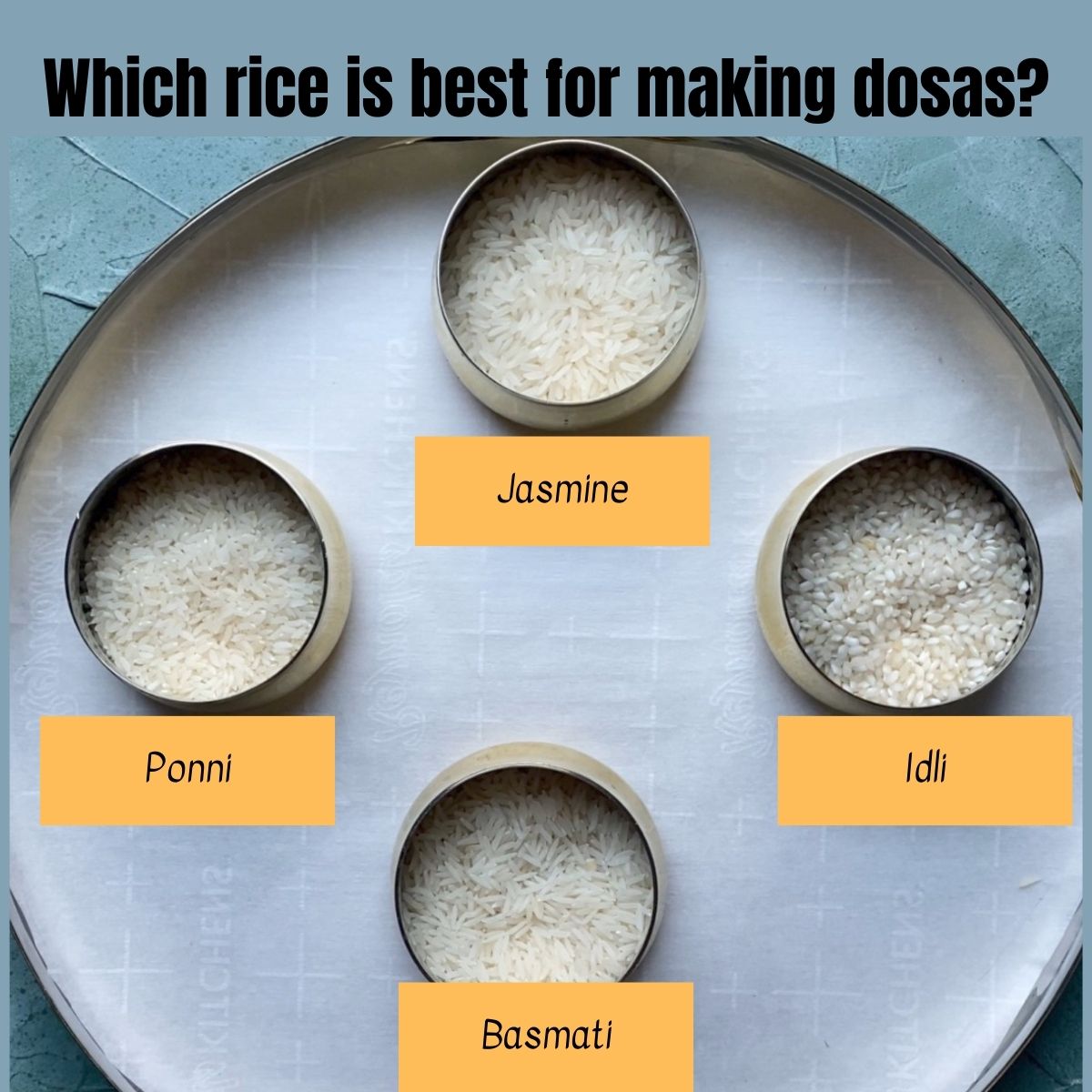
Jump to:
- Goals for running this experiment
- Criteria for rating the dosa
- Rice varieties chosen
- Dosa experiment steps
- Dosa batter observations (before fermentation)
- Which dosa batter fermented the best?
- Which dosa batter was the easiest to cook?
- Summary of best rice varieties for dosa batters
- Frequently Asked Questions
This blog post goes deep on testing different rice varieties (both Indian and non Indian varieties) to see which one yields the best dosa. The blog goes over how the experiment was setup and observations at the various stages of the dosa making process. However, if you want to know the final verdict, simply jump down to the summary section.
Goals for running this experiment
The reasons for running this experiment are...
- Give individuals data to help pick the right rice variety to make their ideal dosas.
- Test various traditional and non-traditional rice types to provide alternatives for those outside India lacking easy access to Indian rice varieties.
- Dive deeper into dosa food science to understand the role rice plays in dosa batter.
Criteria for rating the dosa
The way that I am measuring a "good" dosa is via three qualitative categories as follows...
- Texture - Does the dosa have an audible crunch on the outside while remaining pillow-y soft on the interior.
- Flavor - Does the dosa have a complex sour and nutty flavor that is well balanced?
- Appearance - Does the dosa have a visual golden hue on the exterior?
This criteria for rating is very subjective and qualitative but the descriptions in each category will help you decide the dosa you like the best.
Rice varieties chosen

The rice varieties chosen for this experiment are ....
- Idli rice
- Ponni rice
- Basmati rice
- Jasmine rice
Each of them have varying characteristics that are described in the chart below.

Dosa experiment steps
In order to keep the experiment the same across the varieties of dosas, here are the steps I followed to keep the dosa making process constant amongst the different batter varieties.
- Ratio of urad dal: rice. Each batter used a 1:4 ratio of urad dal to rice aka 2 tablespoons urad dal: ½ cup rice.
- Soaking method. The rice was soaked separately from the urad dal so that they could be ground separately. They were both soaked for 8 hours in room temperature water.
- Grinding the batter: The urad dal for all batters were ground together. They were ground until reached a fluffy consistency with a 1:1 ratio of urad dal to water. The rice was ground until it was a gritty consistency at a 2:3 ratio of rice to water (ie: ½ cup rice to ¾ cup water).
- Mixing the batter: Besides rice and urad dal, the batter also was mixed with ½ teaspoon of Kosher salt. No other inclusions were added.
- Fermentation: Dosa batters were fermented in the inside of the oven during Seattle winter time for 24 hours where the temperature ranged from 65-70F.
- Cooking dosa: All dosas were cooked on a non-stick dosa tawa where the temperature was regulated and tested.I added ~1 teaspoon of vegetable oil to the skillet between every dosa I griddled and checked the temperature of the pan before spreading the dosa batter on the griddle to keep the heat between 260F-270F. If the pan became too hot, I sprinkled water on it to get it back to the right temperature.
Dosa batter observations (before fermentation)
After I ground the rice varieties and before I mixed it with the dal, I wrote down my observations):
- Basmati - Felt the thickest, creamiest, and least grainy
- Jasmine - Felt watery and ultra fine, with a rough texture
- Idli Rice - Second thickest, and felt the most sandy of the four varieties
- Ponni Rice - Had granular bits of rice that were smaller than the idli rice but bigger than jasmine. Closest consistency of the jasmine rice.

Which dosa batter fermented the best?
In order to test the fermentation, I measured how high each of the dosa batters rose. Here are the batters ordered by height from most to least:
- Idli
- Basmati
- Ponni
- Jasmine

Which dosa batter was the easiest to cook?
The dosa batters that were easiest to spread were the easiest to cook. The dosa batters that were the easiest to cook had grit or texture to the batter. The batters that were completely smooth caused the metal cup used to spread the batter to stick to the pan instead of glide on top of the batter. The longer grains of rice like basmati and jasmine ground up pretty smooth and were slightly more difficult to spread than the to the shorter grain rices like idli and ponni which had more grit/texture. My current theory is that a bit of grit in the batter acts like little tiny balls that prevent the cup from suctioning to the pan.
Summary of best rice varieties for dosa batters


The best rice to make dosas - idli rice
Idli rice is the best rice to make dosas. Dosas made with idli rice have a well balanced flavor, yield dosas with the right amount of crisp and browning, and yield dosas that have a fluffy center. Idli rice has key properties that resulted it in beating out the other rice varieties in the dosa experiment.
Why is idli rice the best rice for dosa?
- Idli rice is parboiled. Idli rice is the only rice in our lineup that is a parboiled rice. Parboiled rice is steamed and then commercially dried before it was packaged for sale. This process of parboiling the rice improves the fermentation process, which was why this rice variety rose the highest and had an ideal pillowy center. In addition, parboiled rice goes through a process of starch retrogradation where the molecules in parboiled rice create an even crisper dosa.
- Idli rice batter is slightly grainy. The idli rice batter had a grainy texture with a bit of grit to it which allowed it to crisp up and get that crunch that we so desire in a dosa.
Good rice substitutes for dosa
Idli rice is the best rice to make dosas. Here are some recommended idli rice substitutes for making dosas, ranked from best to worst based on experimentation.
- Jasmine Rice:
- Pros: This variety resulted in dosas that were crunchy and had a nice floral taste.
- Cons:The downside with this rice is that the dosas were almost too crispy and cracker like and didn't have as much fluffiness compared to other varieties in the lineup.
- Ponni rice:
- Pros: Provides the right amount of crispiness and fluffiness.
- Cons: The taste of ponni rice in dosa batter is quite pungent which is why it isn't my top choice.
- Basmati rice:
- Pros: Mild and pleasant taste. Fermented well
- Cons: Dosa was oily, ultra soft, and didn't get that much color.
Thanks for taking the time to read this experiment about how various rice varieties effect dosa batters. What should I test out next in my quest to make the best dosa? If you have suggestions or enjoyed or learned something from this blog post, please leave a comment below – I would LOVE to hear from you!
Frequently Asked Questions
It is important for dosa batters to ferment and fluff up to get a spongy center that is ideal for scooping up sambar and chutney. The fermentation process also adds a more complex, slightly sour flavor to the dosa, much like fermenting sourdough bread. In addition, research has shown that the fermentation process helps release additional nutrients that the body can readily consume.
Idli rice is the best rice for dosa batter. It is a parboiled rice which allows it for optimal fermentation which helps create a fluffy center. Parboiled rice also goes through a process called starch retrogradation which allows the dosa to get a crunchy on the outside.
Basmati rice is not an ideal for dosa batter. In my experiment of making dosa from different variety of rice, basmati rice yielded a dosa that struggled to get color and remained soft compared to other dosa varieties. If you like a softer and spongier dosa with a milder taste, you can opt for basmati rice. However, a parboiled rice variety is a much better alternative to basmati rice.
Yes! Idli rice is a parboiled variety which results in dosas that are fluffy in the center and crispy on the exterior.
In my test of various dosa varieties, jasmine rice yielded in dosas that were highly crispy and almost cracker like with a pleasant floral taste. Jasmine rice however lacked the fluffiness in the center compared to other rice varieties. If using jasmine rice for dosa batter, increase the ratio of dal:rice in the dosa batter from 1:4 -> 2:4
Ponni rice is not an ideal for dosa batter but is an okay substitute in a pinch. Ponni rice yields a dosa in a pungent taste but does yield a crisp and fluffy dosa.
Idli rice yields a crispy dosa. Jasmine rice is another non-traditional variety that also yielded crispy dosas in the dosa experiment.


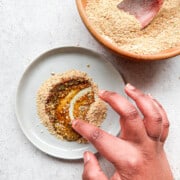
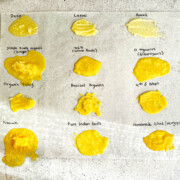
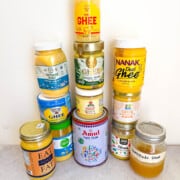
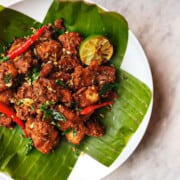
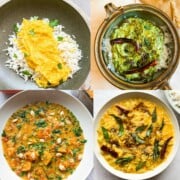
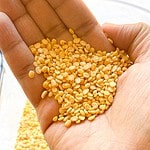
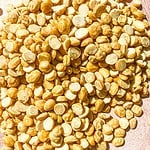
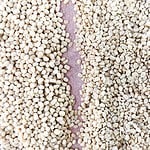
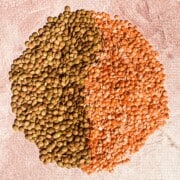
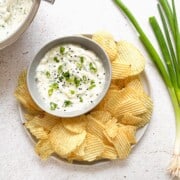
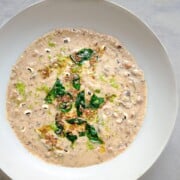
Rakib says
Yes. Basmoti Chal( Rice) is a favorable for making dosa batter.
Shanti Pandey says
Hi Shri, I am from Mumbai i enjoyed reading your article. My son loves South Indian food .this article is a must read for those who like this food but don't know how to make .keep it up .
Shri Repp says
Thank you so much Shanti! This makes me so happy to hear <3
Charmaine dc says
Loved the dept and precision with which you did this experiment Shri.Being south indian dosa and idlis are staple breakfast options for us.Heres my two cents of knowledge from experience-Add 1tsp channa dal and tuval dal along with 1 tsp fenugreek seeds to soak and grind with the urad dal.A tsp of chiroi rawa added to the batter last up the crispness quotient.
Wet grinding makes a world of a difference in aerating the batter without heating it.Lastly and this usually is the most important part for me the girdle must be cast iron .This takes the quality of dosa to rival the ones we get in the hotels minus the greasiness.Good luck experimenting. Cheers!!
Shri Repp says
Thank you for leaving such a detailed response! I'm so glad you loved the experiment. I'm planning on more soon and you've given me so many ideas with your comment! Thank you so much <3
Kumudh says
Hello Shri
Thanks for the article which clearly explained on the different types of dosa batter and disaster. I'm from Malaysia and did try making dosa with basmathi rice. After fermentation the dosa did not turn out well as the batter stuck to the pan as it was too soft. So I added some wheat flour and it turned out well. I enjoy making dosas with idli rice and it always turns out superb.
Shri Repp says
I'm so glad that this article helped! 🙂
Kshetrimayum Anil Singh says
Let's do another experiment with
Brown rice
Very Sticky
Aromatic
High anthocynin
Shri Repp says
oooh yess! I am gearing up to do a whole set of other experiments soon!
Vaishnavi says
Hi Shri!
Loved your experiment and thanks for sharing your findings. I am curious to know what you find out when you experiment with the time and temperature for fermenting the batter. That would be some useful information for making dosa batter during peak mid west winter!
Shri Repp says
Thanks so much for reading! I plan on doing some more research to answer those exact questions fairly soon and posting all my results on the blog and social media so stay tuned 🙂
Mo Pawar says
Very informative- thank you.
I am based in the UK (originally from India) and am coming to India to learn how to make different types of dosas. I am keen to understand if fermentation is really necessary (I believe Rava Dosa do not require fermentation). I am interested to know if non fermented dosas last longer in the fridge - and if the batter can be pre packaged in vacuum packs, and what the shelf life would be.Would be happy to meet up when I arrive in India ?
Shri Repp says
Thank you so much Mo! I am so glad you found the article helpful. Here are some answers to the questions that you have.
1) Fermentation is important when making dosas because it adds to that complex taste of a dosa. The two main reasons why it is important is 1) Taste: During fermentation, the bacteria leaves a slightly sour and complex taste to the batter which makes it so tasty. 2) Texture: Fermentation airs out the dosa batter as the good bacteria grows and leaves behind air bubbles. This leads to the spongy interior of the dosa batter.
2) Will non-fermented dosa batter like rava dosa batter last longer in the fridge - If it is rava dosa batter, yes you should be fine leaving it in the fridge. However, as the batter sits it may absorb more water which will thicken the batter so you may need to add addition water and stir after it has been sitting in the fridge. If you are using a recipe for instant dosa that is not rava dosa, those recipes often call for a leavening agent like baking soda/baking powder. The potency of the baking soda/baking powder decreases over time so it is best to chill the batter without those ingredients added - whether that be in a vacuum seal or not and then add the baking soda/powder right before you are about to make doas.
3) Vacuum sealing fermented dosa batter - I haven't personally tested out the vacuum sealing fermented dough but this is an interesting question that I may run another experiment on. Vacuum sealing takes out all of the oxygen in the bag which is great in preventing the growth of harmful bacteria or mold that can spoil the dosa batter. However, my concern with this approach is that the lack of oxygen may also kill good bacteria in fermented dosa and therefore cause a flat dosa with no air bubbles which is a good sign of a dosa. Again, I've never tried it before so I'll have to give it a shot.
4) I actually am based in the U.S not India. 🙂 But I am so excited to hear that you were reading this from the U.K and found this helpful. More dosa content coming at you soon!
Cyril says
Super awesome. I am in berlin now and wanted to find the right rice for Dosa batter. This helped . Thanks so much!
Shri Repp says
Thank you so much! It is sometimes hard to find speciality Indian rice varieties around the world so I'm glad that this experiment gave some insights on ones to use and ones to avoid 🙂
Maria S says
Excellent explanation.
I admire your diligence in checking out different rice for best dosa batter.
Great work!!!
Shri Repp says
Thank you so much! It means the world to me <3
Parul says
Hi, I have a question!
I have leftover parboiled rice since many years. Can I still use it to make idli batter?
Shri Repp says
It can be old but just double check that there aren't any bugs or fungus. You can easily do this by adding water to some and seeing if there are any black dots those are bugs that got into the rice. A worse issue is if you see the parboiled rice is clumping, that means that a fungus has gotten to it and its best to throw it away. But if these two aren't present than you should be good to go.
JADF - Just Another Dosa Fanatic says
Hey Shri, awesome experiment, i am a dosa fanatic and experiment myself, Couple observations/thoughts:
1. i just saw this video https://youtu.be/9saTcTm4UQw?si=SMbbrvd6j1NBqZXh from the chef at Semma (the hottest new indian restaurant in NYC) and he claims or appears to use regular rice for the dosa and his dosa's look amazing (havent been to Semma as yet)..any thoughts? How does he get that golden color??
2. I live in the midwest and have found success using a instant pot for fermentation. 8 hours on a yoghurt setting does the trick...
3. I noticed you are using a 4:1 rice/dal ratio, i have found 3:1 idli rice with a teaspoon of fenugreek and a handful of thick poha tends to deliver good results,
4. Great notes on the temperature, i eye ball it and generally lower the temp between dosas with a splash of water
5. Finally I have come to the firm conclusion that an iron griddle probably is as key to a perfect dosa as the right rice. I was watching this video https://youtu.be/LIPgOTJ7d2o?si=7UAvVhlc6NddzQTo
Kripal Ammana a Bangalore based food blogger and he shows how a restaurant there has a specific thickness of griddle (7.04 onwards) custom made to get that perfect finish..
Great work 🙂
Shri Repp says
You have no idea how much your thoughtful comment made my day!
1. I've been to Semma and their dosa is really good. Super crunchy and brown on the outside and fluffy on the inside. I bet that even if he doesn't use Idli rice, he is probably using a rice like sona masuri, ponni, or a general short grain american rice for the video but not long grain like basmati. I do think that for browning that most restaurants add a bit of sugar as well to get even browning but the iron that he uses might just be that hot!
2.3.5 YESSSS! I love all of your tricks and variables you've tested. That is so awesome. I plan on going through so many different variables from rice/dal ratio, griddle type, inclusions (poha, sugar, fenugreek, cooked rice, ect) and see how all of these effect the dosa. I put these trials on the back burner but I think it is time I start up the experiment again and publish more findings! If you happen to have Instagram - please feel to reach out there as well. I'll post there to update folks when more of these dosa posts go live! I'm so excited to dig into it more especially when I see so much experiment from fellow dosa lovers <3
Sakthi says
hi Shri
You talk about Idli rice that amazing ,what exactly is the grade of Idli rice ?
IR20 or ADT 36 or 37 which is the best rice whixch also gives yield?
Shri Repp says
Hey Sakthi! This is such an interesting question. I haven't personally done tests to figure this out yet but I'll definitely do some research and report back!
Julie says
Hi Shri
The rice you used was either short grain or long grain. What about medium grain?
Many sites say that medium works better than long grain. Have you tried it?
Dattatray Nidavanche says
amazing post
Shri Repp says
Thank you so much!
Lakshmi says
Hello Shri,
My desire to please my son led to a very similar experiment where I attempted different combinations. I have arrived at dal:rice=1:3 with a little poha. This gives what I found the right color texture.
The only way I obtained a good dosa was with a cast iron griddle.
Appreciated this article so much. Keep on blogging!
Shri Repp says
I'm so glad you enjoyed the experiment Lakshmi! Thanks so much for your insights. Excited to try some poha in my batter!
IdlyDosa says
Glad you made the experiment,
1. one important aspect to measure is "yield of batter - in terms of volume" - this makes the batter naturally light/airy which is further improved/airy with fermentation + ullutam parupu's very foamy/volumous texture. Best Idly making batter (real test) will make best Dosa (with water adjusted) as well and not the other way always (Dosa is forgiving when compared to Idly) .
2. Starchy vs non-starchy - parboiling moves loose starchy rice to not so much - you could measure that aspect with stickiness. 🙂
Please include Calrose rice in your test.
sylvester says
I have been struggling with dosa for many years, sad to say. I have asked several Indian friends to help me, and they show me, saying, "See how easy it is?" but that is not helpful.
You approach dosa making like an engineer or scientist. All the variables are laid out. Now I understand the process! Now I understand why I was having the problems I was.
I am now able to make perfect dosa. I cannot thank you enough for this master class. God bless you.
Shri Repp says
This makes me so happy to hear 🙂 Hopefully even more dosa content coming this year!